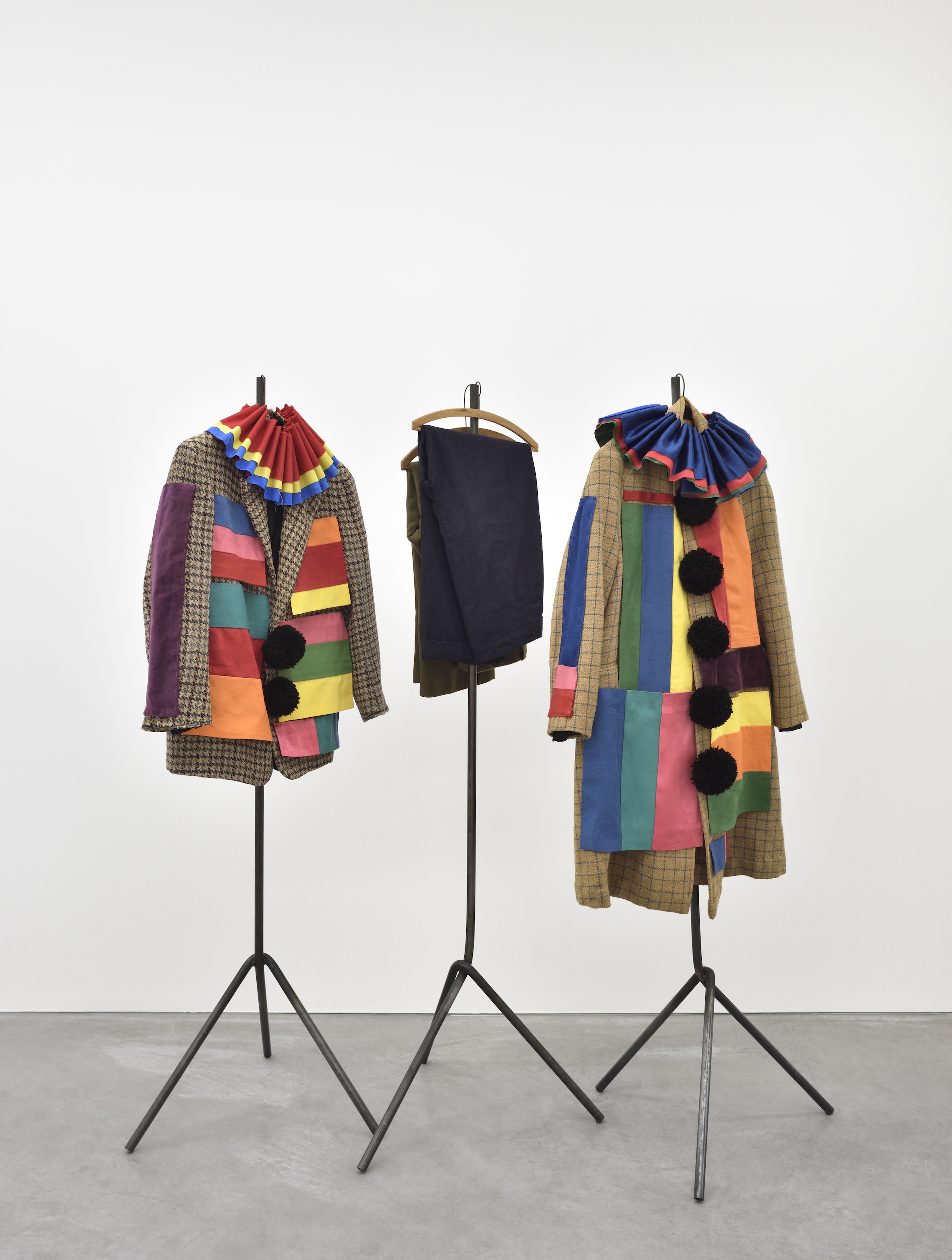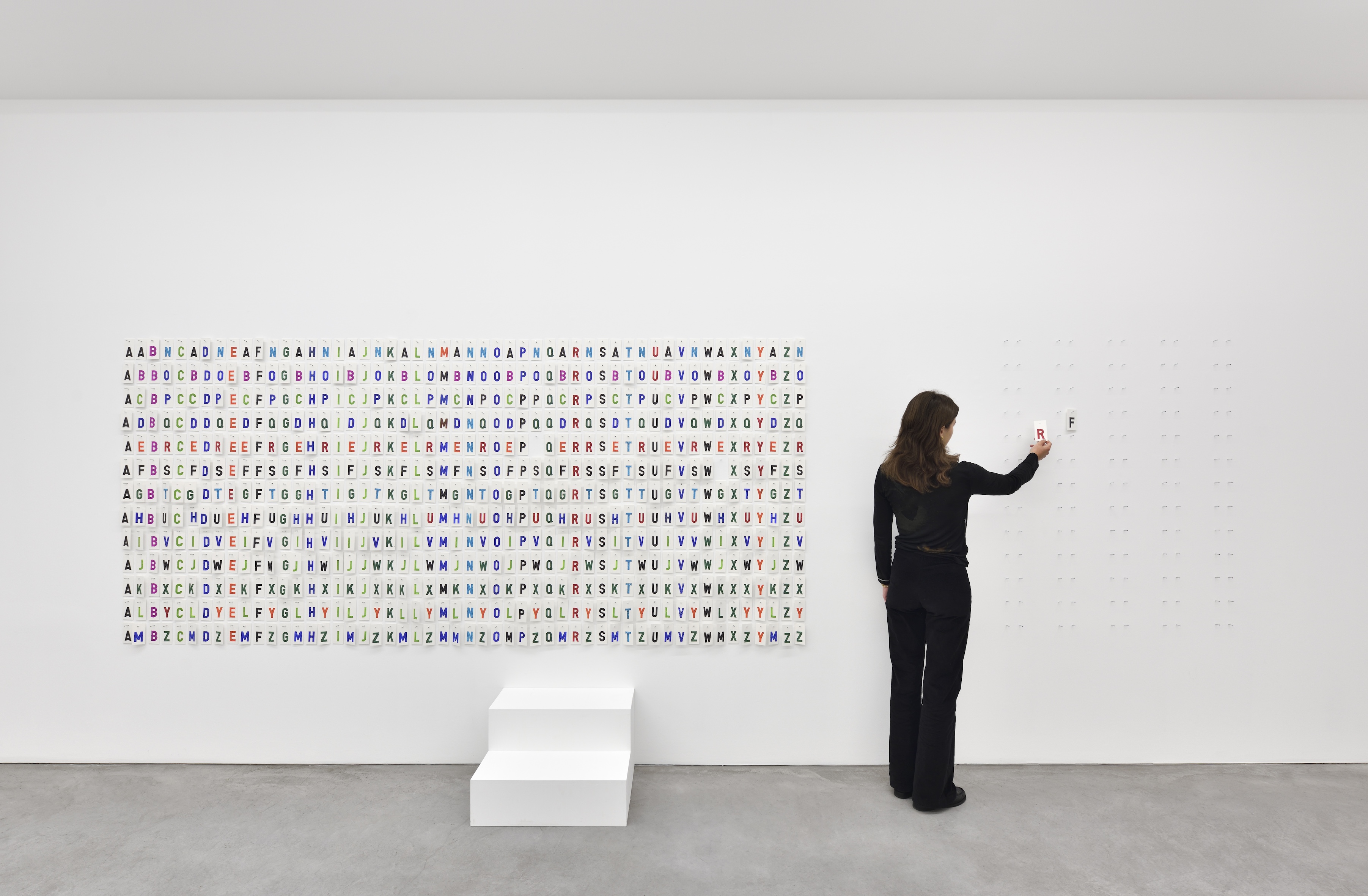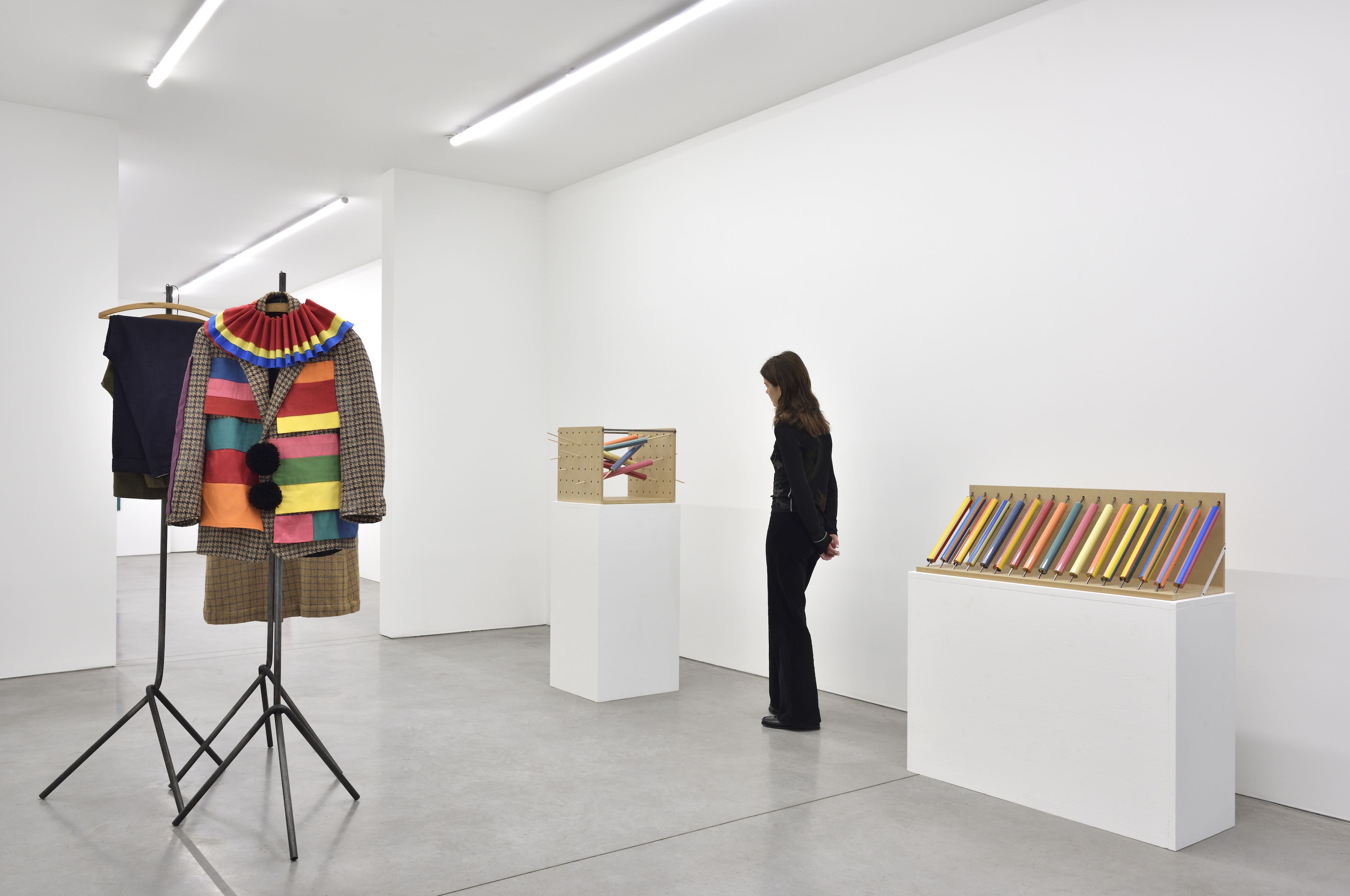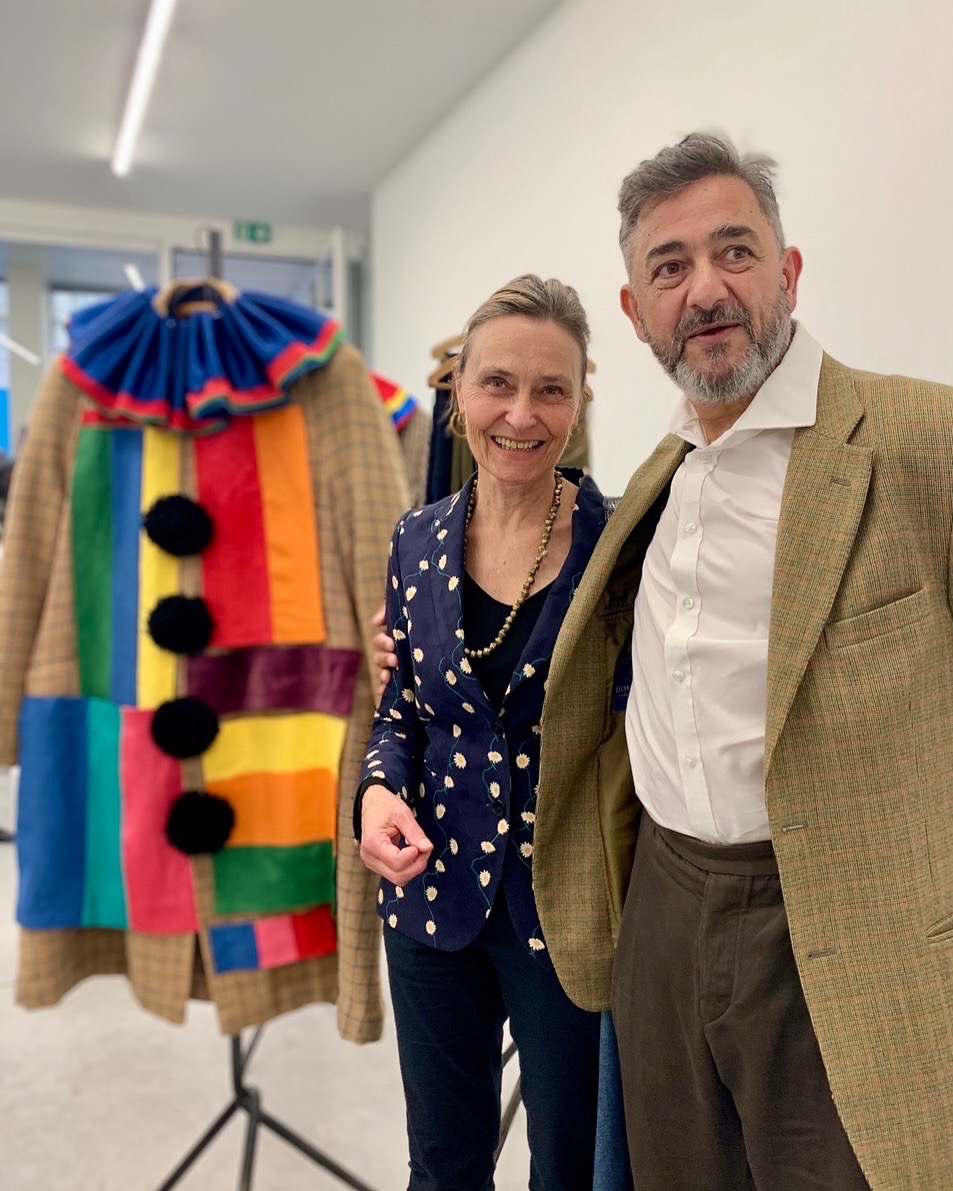Peter Fillingham Basil Dress, Marian Goodman Gallery, Paris
The works made for this exhibition comprise three costume pieces titled ‘Fruit Salad’, arranged to explore possible associations with historical events and their relevance in a contemporary context. Peter Fillingham has acted as custodian of objects belonging to Basil Dean, who was Tacida Dean's grandfather. At the onset of World War II in 1939, Basil Dean and his colleagues collaborated for ENSA (Entertainments National Service Association) to establish large-scale entertainment facilities. Fillingham conceptualises a fluid, ongoing memorial to ENSA and entertainers from both past and present,aiming to create a connection across generations. A second costume-likes sculpture will be added to both the jacket and overcoat, constructed from wooden sections and vintage fabrics referencing wartime medal ribbons. These pieces are designed with minimal detail, reflecting the ephemeral nature of stage costumes.
Fillingham’s intention in this solo exhibition is to examine moments of entertainment during wartime and the complexities involved in visibility for performers and audiences. The exhibition reflects on entertainment activities organised by ENSA, which existed between varying social realities. Archival photographs often depict entertainers—primarily women (1)—in formal evening attire performing for troops. These images offer insight into the environment and context of these performances.
At the start of World War II, Basil Dean and others used their expertise to form ENSA, overcoming institutional challenges to develop extensive entertainment provisions. ENSA also arranged performances for civilians in factories and broadcasted events via radio, aimed at fostering collective resilience and morale. Entertainers frequently performed near active combat zones and were subject to rapid evacuation. Performance spaces were often temporary structures that could be easily transported.
Archival materials document the uncertainties of wartime performance settings, sometimes showing artillery being repurposed for seating and soldiers maintaining vigilance during shows due to threats from enemy aircraft. These depictions illustrate environments where artists,writers, and performers contributed their skills under challenging circumstances.
Fillingham has researched ENSA’s significance within the war effort, tracing its origins to Pierrot entertainers of the late 1900s and the development of community-based entertainment accessible to varied audiences. The Entertainments National Service Association (ENSA) was established in 1939 by Basil Dean and Leslie Henson to provide entertainment for British military personnel during World War II. The organisation brought together professionals recognised for their expertise and adaptability.
Seaside locations played an important role, offering spaces perceived as distinct from daily routines. Throughout this period, Basil Dean and others continued to manage theatres and venues, applying insights gained from their experiences. When World War II began, efforts were coordinated to expand ENSA’s reach, balancing regulatory requirements with creative expression, the humourand often quite transgressive behaviour was balanced between a strict military guidelines and free abandon.
Cécile Bourne-Farrell
(1) Vera Lynn, often called the "Forces' Sweetheart," who entertained troops with songs like "We'll Meet Again" and"(There'll Be Bluebirds Over) The White Cliffs of Dover". Other key figures included Ella Fitzgerald, known for her jazz vocals, and the Andrews Sisters, a popular vocal group
Born in Portsmouth, England, in 1964 to an Anglo-Indian family, Peter Fillingham obtained a BA in Fine Art, specializing in sculpture at the Camberwell School of Art and Design in 1987 and an MA in Sculpture at the Royal College of Art, London in 1989. In 1991, Fillingham was invited to Atelier Boltanski through École Nationale des Beaux-Arts in Paris and has maintained a close relationship with France ever since, having lived in the country for 8 years in the 2010s.
Since the early 1990s Fillingham has regularly exhibited his works, often in project or artist-run spaces, churches, villages and halls where art is integrated into everyday life. His project Fleurs d’Ivry, was a joint installation with Henry Coleman at the Bomb Factory Art Foundation in London earlier this year. His most recent solo exhibition, Love France, was at the Project 78 Gallery in St. Leonards-on-sea in 2022. Fillingham has worked on many collaborative projects with Tacita Dean and Rasheed Araeen over the years, including a joint exhibition at the Chelsea Space in London in 2018 with Araeen.
Throughout his career as an artist, Fillingham has been both course director and associate lecturer at many renowned art colleges in the UK and France, including UAL, Goldsmiths College and Parsons Paris. Fillingham lives and works in Hastings, England.
https://www.mariangoodman.com/exhibitions/608/
66-rue-du-temple-75003-paris-france-22-may-18-july-2025-opening-reception-thursday-22-may-2025
Photographies of the attached images are by Rebecca Fanuele, Paris



